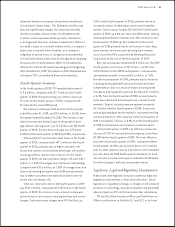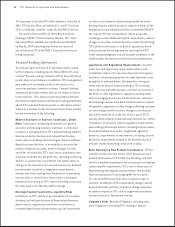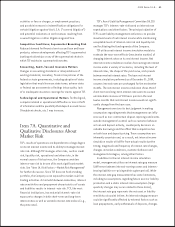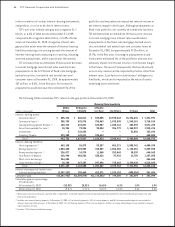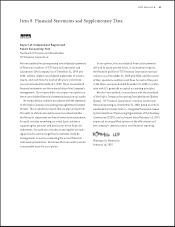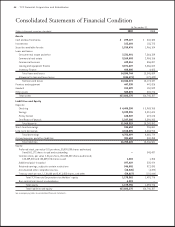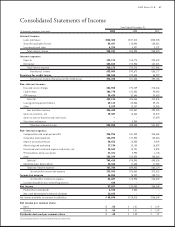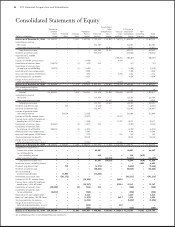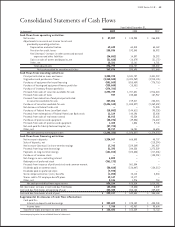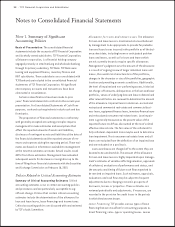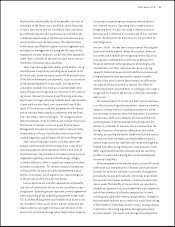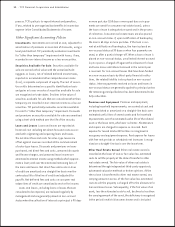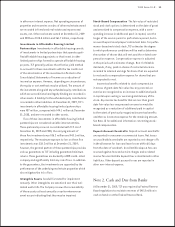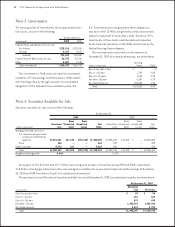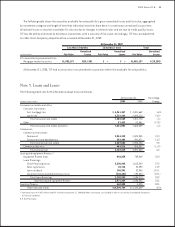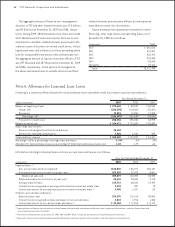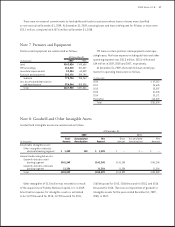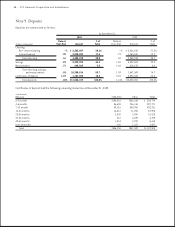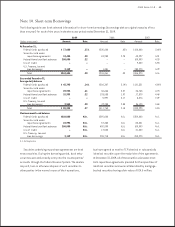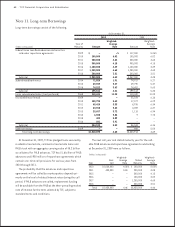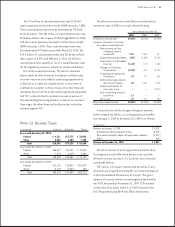TCF Bank 2009 Annual Report Download - page 67
Download and view the complete annual report
Please find page 67 of the 2009 TCF Bank annual report below. You can navigate through the pages in the report by either clicking on the pages listed below, or by using the keyword search tool below to find specific information within the annual report.
2009 Form 10-K : 51
that transfer substantially all of the benets and risks of
ownership to the lessee are classied as direct nancing
or sales-type leases and are included in loans and leases.
Direct nancing and sales-type leases are carried at the
combined present value of the future minimum lease pay-
ments and the lease residual values. The determination
of the lease classication requires various judgments and
estimates by management including the fair value of the
equipment at lease inception, useful life of the equipment
under lease, estimate of the lease residual value and col-
lectibility of minimum lease payments.
Sales-type leases generate dealer prot which is recog-
nized at lease inception by recording lease revenue net of
the lease cost. Lease revenue consists of the present value
of the future minimum lease payments. Lease cost consists
of the leased equipment’s book value, less the present
value of its residual. The revenues associated with other
types of leases are recognized over the term of the underly-
ing leases. Interest income on direct nancing and sales-
type leases is recognized using methods which approximate
a level yield over the xed, non-cancelable term of the
lease. TCF receives pro rata rent payments for the interim
period until the lease contract commences and the xed,
non-cancelable, lease term begins. TCF recognizes these
interim payments in the month they are earned and records
the income in interest income on direct nance leases.
Management has policies and procedures in place for the
determination of lease classication and review of the
related judgments and estimates for all lease nancings.
Some lease nancings include a residual value com-
ponent, which represents the estimated fair value of the
leased equipment at the expiration of the initial term of
the transaction. The estimation of residual values involves
judgments regarding product and technology changes,
customer behavior, shifts in supply and demand and other
economic assumptions. TCF reviews residual assumptions
on the portfolio at least annually and downward adjust-
ments, if necessary, are charged to non-interest expense
in the periods in which they become known.
Leases which do not transfer substantially all benets
and risks of ownership to the lessee are classied as oper-
ating leases. Operating leases represent a rental agreement
where ownership of the underlying equipment resides with
TCF. Such leased equipment and related initial direct costs
are included in other assets on the balance sheet and are
depreciated on a straight-line basis over the term of the
lease to its estimated salvage value. Depreciation expense
is recorded as operating lease expense and included in
non-interest expense. Operating lease rental income is
recognized when it is due according to the provisions of
the lease and is reected as a component of non-interest
income. An allowance for lease losses is not provided on
operating leases.
Income Taxes Income taxes are accounted for using the
asset and liability method. Under this method, deferred
tax assets and liabilities are recognized for the future tax
consequences attributable to differences between the
nancial statement carrying amounts of existing assets
and liabilities and their respective tax-basis carrying
amounts. Deferred tax assets and liabilities are measured
using enacted tax rates expected to apply to taxable
income in the years in which those temporary differences
are expected to be recovered or settled. The effect on
deferred tax assets and liabilities of a change in tax rates is
recognized in income in the period in which the enactment
date occurs.
The determination of current and deferred income taxes
is a critical accounting estimate which is based on complex
analyses of many factors including interpretation of fed-
eral and state income tax laws, the evaluation of uncertain
tax positions, differences between the tax and nancial
reporting bases of assets and liabilities (temporary dif-
ferences), estimates of amounts due or owed such as the
timing of reversal of temporary differences and current
nancial accounting standards. Additionally, there can be
no assurance that estimates and interpretations used in
determining income tax liabilities will not be challenged by
federal and state taxing authorities. Actual results could
differ signicantly from the estimates and tax law inter-
pretations used in determining the current and deferred
income tax liabilities.
In the preparation of income tax returns, tax positions are
taken based on interpretation of federal and state income
tax laws for which the outcome is uncertain. Management
periodically reviews and evaluates the status of uncertain
tax positions and makes estimates of amounts ultimately
due or owed. The benets of tax positions are recorded in
income tax expense in the consolidated nancial statements,
net of the estimates of ultimate amounts due or owed
including any applicable interest and penalties. Changes in
the estimated amounts due or owed may result from closing
of the statute of limitations on tax returns, new legislation,
clarication of existing legislation through government
pronouncements, the courts and through the examination


